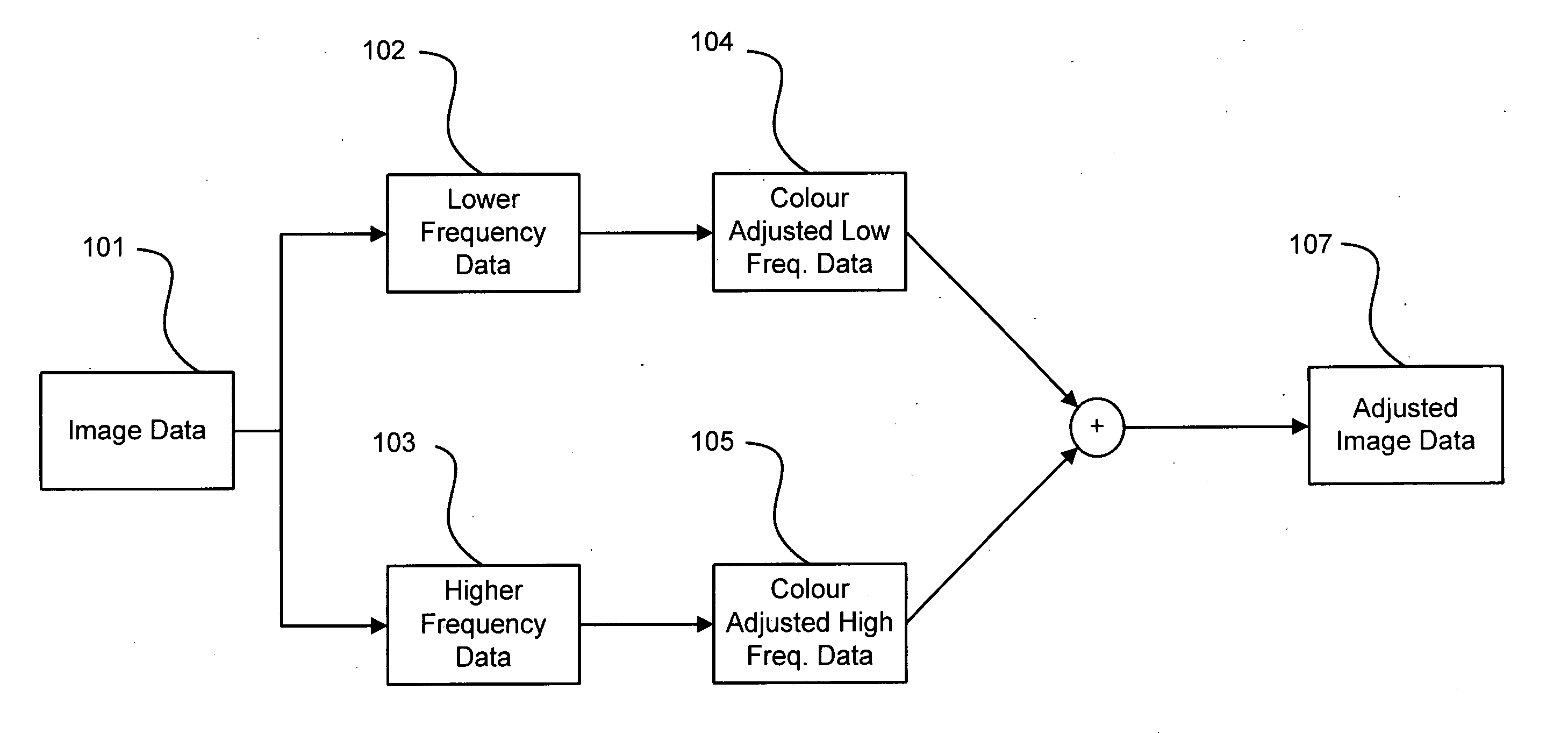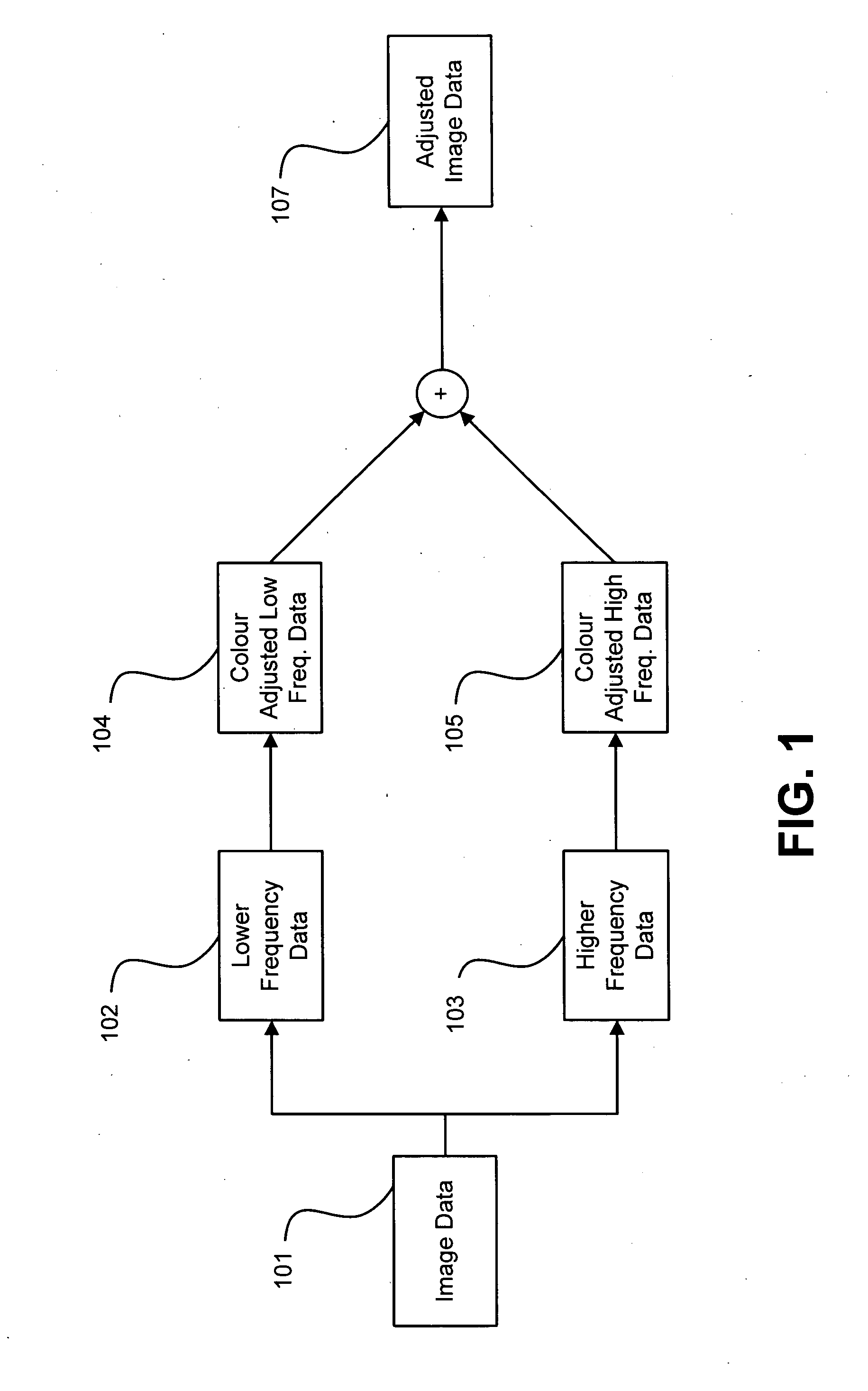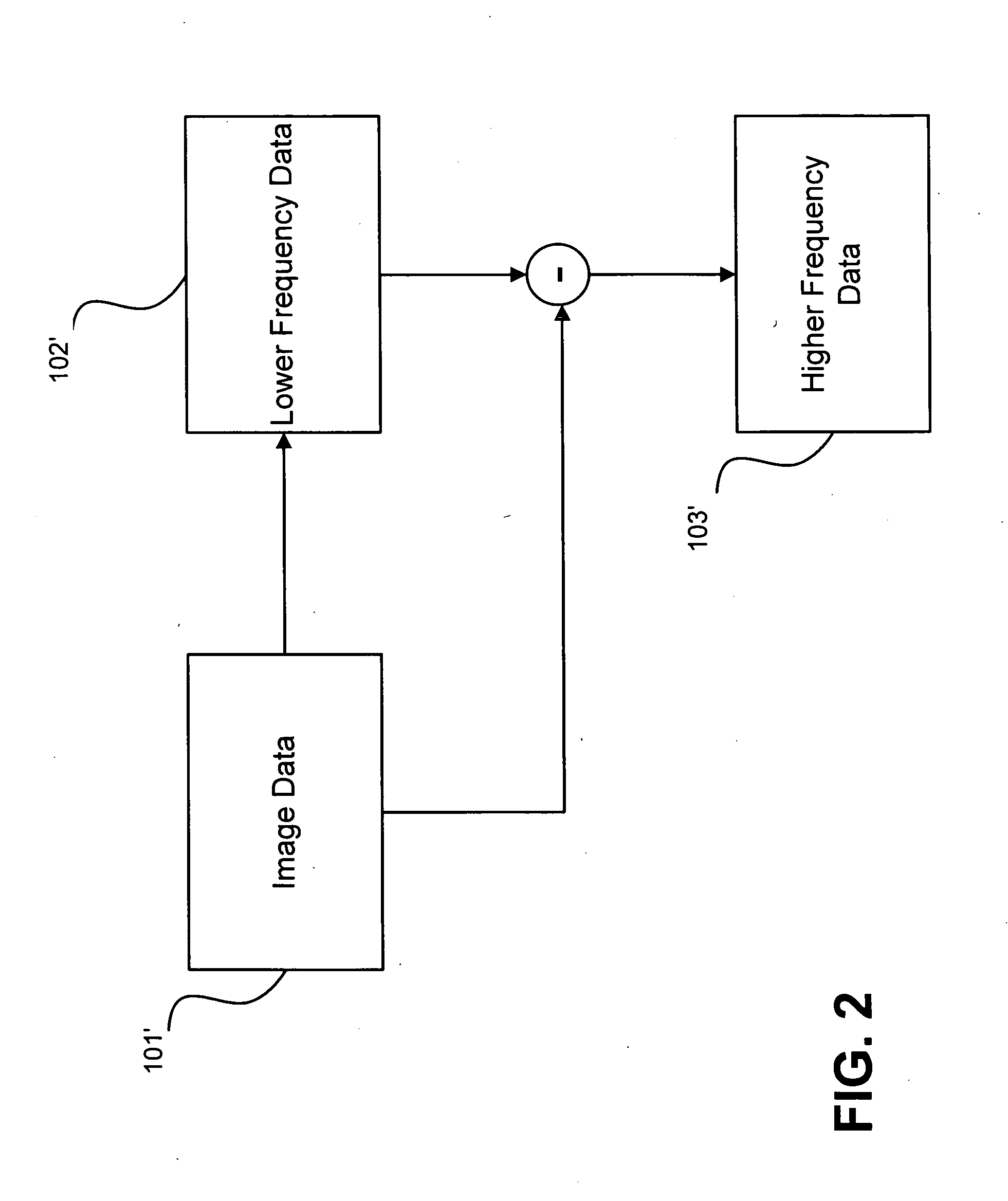Image processing
- Summary
- Abstract
- Description
- Claims
- Application Information
AI Technical Summary
Benefits of technology
Problems solved by technology
Method used
Image
Examples
Embodiment Construction
[0027]FIG. 1 is a control diagram relating to a method of obtaining colour adjusted image data. At steps 102, 103 of FIG. 1, image data 101 to be transformed is resolved into data relating to lower and higher frequency components. At step 104, a colour transform adapted to maintain a desired level of colour accuracy is applied to the data relating to the lower frequency components, with a low noise transform being applied to the data relating to the higher frequency component at step 105. The corrected data components are combined using a simple pixel-wise addition for example, to produce adjusted image data 107. The method will be described in more detail below.
[0028] In a first step, the raw image data 101 is resolved into different components. For example, higher and lower frequency components respectively.
[0029] In an embodiment, higher frequency elements of the image data are removed by smoothing to obtain the lower frequency image data 102. In an embodiment, the difference b...
PUM
 Login to View More
Login to View More Abstract
Description
Claims
Application Information
 Login to View More
Login to View More - R&D Engineer
- R&D Manager
- IP Professional
- Industry Leading Data Capabilities
- Powerful AI technology
- Patent DNA Extraction
Browse by: Latest US Patents, China's latest patents, Technical Efficacy Thesaurus, Application Domain, Technology Topic, Popular Technical Reports.
© 2024 PatSnap. All rights reserved.Legal|Privacy policy|Modern Slavery Act Transparency Statement|Sitemap|About US| Contact US: help@patsnap.com










